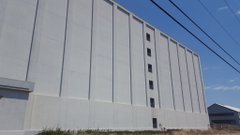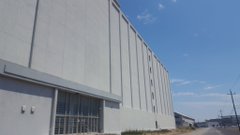Frederick Douglass on Capitalism, Slavery, and the 'Arrant Nonsense' of Socialism
Understanding the political philosophy of the abolitionist leader.
 Library of CongressIn November 1848 a socialist activist gave a speech at the 13th annual meeting of the Rhode Island Anti-Slavery Society. "Mr. Ingliss" began his remarks well enough, reported the abolitionist leader Frederick Douglass, who was present to give a speech of his own that day, "but strangely enough went on in an effort to show that wages slavery is as bad as chattel slavery."
Library of CongressIn November 1848 a socialist activist gave a speech at the 13th annual meeting of the Rhode Island Anti-Slavery Society. "Mr. Ingliss" began his remarks well enough, reported the abolitionist leader Frederick Douglass, who was present to give a speech of his own that day, "but strangely enough went on in an effort to show that wages slavery is as bad as chattel slavery."
Douglass soon became infuriated with the socialist speaker. "The attempts to place holding property in the soil—on the same footing as holding property in man, was most lame and impotent," Douglass declared. "And the wonder is that anyone could listen with patience to such arrant nonsense."
Frederick Douglass heard a lot of arrant nonsense from American socialists in those days. That's because most socialists thought the anti-slavery movement had its priorities all wrong. As the left-wing historian Carl Guarneri once put it, most antebellum socialists "were hostile or at least indifferent to the abolitionist appeal because they believed that it diverted attention from the serious problems facing northern workers with the onset of industrial capitalism." The true path to social reform, the socialists said, was the path of anti-capitalism.
But Douglass would have none of that. "To own the soil is no harm in itself," he maintained. "It is right that [man] should own it. It is his duty to possess it—and to possess it in that way in which its energies and properties can be made most useful to the human family—now and always."
Douglass had no patience for socialism because Douglass championed the set of ideas that have come to be known under the label of classical liberalism. He stood for Lockean natural rights, racial equality, and economic liberty in a free labor system. At the very heart of his worldview was the principle of self-ownership. "You are a man, and so am I," Douglass told his old master. "In leaving you, I took nothing but what belonged to me, and in no way lessened your means for obtaining an honest living." Referring to his first paying job after his escape from bondage, Douglass wrote: "I was now my own master—a tremendous fact." For Douglass, that tremendous fact of self-ownership necessarily included both the freedom to compete in the economic marketplace and the right to enjoy the fruits of his own labors.
Unsurprisingly, Douglass's individualistic, market-oriented definition of liberty put him at odds with the socialist creed.
The abolitionist-turned-socialist John A. Collins offers a telling contrast. A one-time colleague of both Douglass and William Lloyd Garrison, Collins went on a fundraising trip to England on behalf of the Massachusetts Anti-Slavery Society in the 1840s and returned home a devotee of the English socialist George Henry Evans. The "right of individual ownership in the soil and its products," Collins declared, are "the great cause of causes, which makes man practically an enemy to his species." Collins came to think that private property was the root of all evil.
He didn't remain much of an abolitionist after that. "At antislavery conventions," the historian John L. Thomas has noted, "Collins took a perfunctory part, scarcely concealing his impatience until the end of the meeting when he could announce that a socialist meeting followed at which the real and vital questions of the day would be discussed."
Perhaps the most significant left-wing attacks on the abolitionists at that time came in the pages of The Phalanx, a journal devoted to spreading the ideas of the French socialist Charles Fourier. "The Abolition Party," The Phalanxcomplained in an unsigned 1843 editorial, "seems to think that nothing else is false in our social organization, and that slavery is the only social evil to be extirpated." In fact, The Phalanx asserted, the "tyranny of capital" is the real evil to be extirpated because capitalism "reduces [the working class] in time to a condition even worse than that of slaves. Under this system the Hired Laborer is worked to excess, beggared and degraded... The slave at least does not endure these evils, which 'Civilized' society inflicts on its hirelings."
No wonder why Frederick Douglass thought the socialists were speaking arrant nonsense. He knew slavery firsthand, and he had no doubt that free labor was infinitely superior to it.
Ironically, when it came to making arguments against free labor, the socialists and the slaveholders made certain identical claims. For example, the South's leading pro-slavery intellectual, the writer George Fitzhugh, argued that free labor was "worse than slavery" because it simply meant that the capitalists were free to exploit the workers. The idea that "individuals and peoples prosper most when governed least," Fitzhugh wrote, was nothing but a lie: "It has been justly observed that under this system the rich are continually growing richer and the poor poorer." As for the pro-market writings of John Locke and Adam Smith, Fitzhugh sneered that they amounted to "every man for himself, and Devil take the hindmost."
Douglass took a different view. For example, taking a page from Locke's notion of private property emerging from man mixing his labor with the natural world, Douglass pointed to the many labors performed by black Americans as clear evidence that they were entitled to the full spectrum of natural rights. "Is it not astonishing," Douglass declared, "that, while we are plowing, planting, and reaping, using all kinds of mechanical tools, erecting houses...[that] we are called upon to prove that we are men!" Douglass's writings and speeches rang out with the very classical liberal tenets that were spurned by both the socialists and the slaveholders.
Today Frederick Douglass is best remembered as a giant of the abolitionist cause. That is as it should be. The destruction of slavery was his life's work, and he deserves to be honored and remembered for it. But as the above history also makes clear, Douglass deserves to be recognized on another front: namely, for being one of the 19th century's most eloquent critics of socialism.

/cdn.vox-cdn.com/uploads/chorus_asset/file/10091435/20160818_134024.jpg) A view of the shipyard from the open areas near the new townhomes and flats at The Shipyard SF. Home prices range from $775,000 for 740 square feet, and $1.5 million for a two-bedroom.
A view of the shipyard from the open areas near the new townhomes and flats at The Shipyard SF. Home prices range from $775,000 for 740 square feet, and $1.5 million for a two-bedroom.

 Chris Roberts@cbloggy
Chris Roberts@cbloggy/cdn.vox-cdn.com/uploads/chorus_asset/file/10104163/20170629_140023.jpg) A view of an area where soil has been removed and tested for cleanup. Nearly half of areas like this at the shipyard show evidence of potential data manipulation or falsification, according to an initial review.
A view of an area where soil has been removed and tested for cleanup. Nearly half of areas like this at the shipyard show evidence of potential data manipulation or falsification, according to an initial review./cdn.vox-cdn.com/uploads/chorus_asset/file/10091397/20170629_125440.jpg) David Anton (left) points to a map of the shipyard at a June press conference announcing a petition asking the federal government to revoke Tetra Tech’s license to perform environmental cleanup. A later review prepared for the Navy found issue with nearly half of the work done by the company.
David Anton (left) points to a map of the shipyard at a June press conference announcing a petition asking the federal government to revoke Tetra Tech’s license to perform environmental cleanup. A later review prepared for the Navy found issue with nearly half of the work done by the company./cdn.vox-cdn.com/uploads/chorus_asset/file/10091405/20170805_132712.jpg) One of many advertisements for new homes available at The SF Shipyard.
One of many advertisements for new homes available at The SF Shipyard./cdn.vox-cdn.com/uploads/chorus_asset/file/10091409/20170805_124245.jpg)


